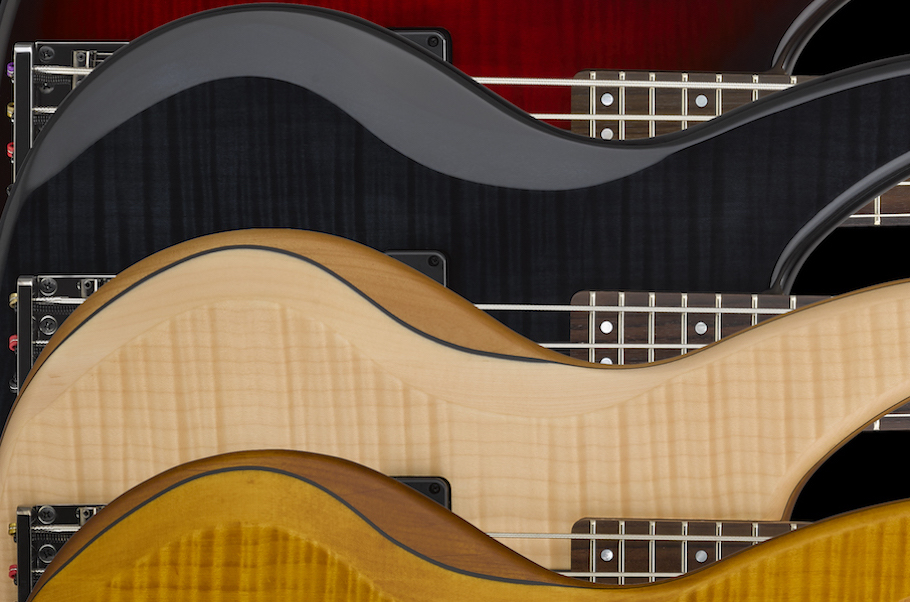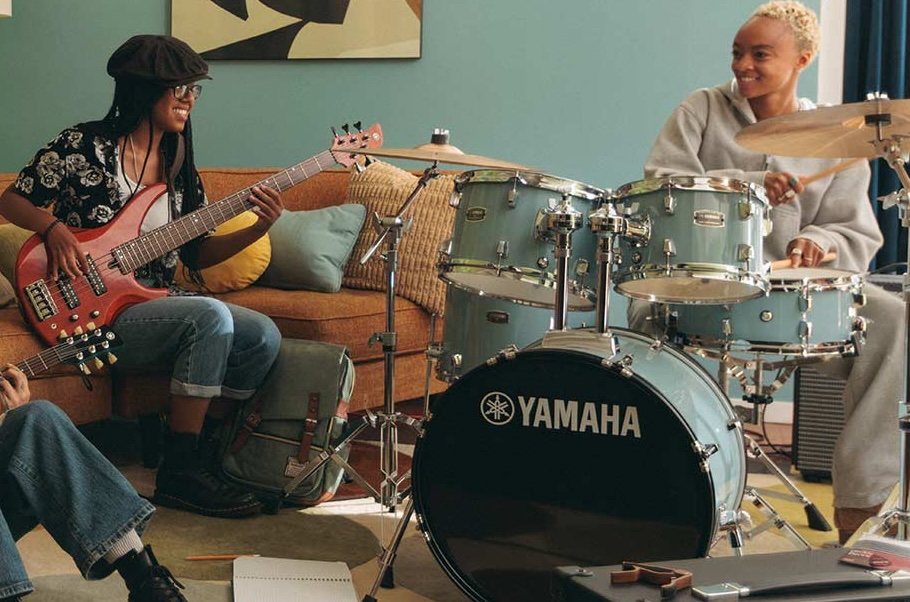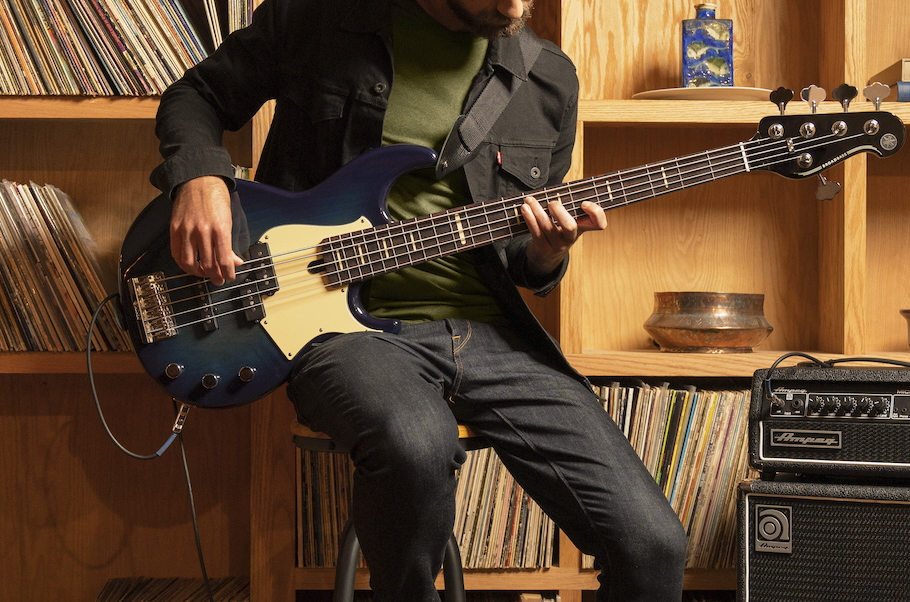A Bassist’s Guide to Playing Jazz, Part 2
More tips for mastering this challenging genre.
As we saw in Part 1 of this two-part posting, knowing how to play jazz on bass involves many of the same steps as mastering a new language: Knowing the basics, learning to express yourself, consistent practice, improvisation, conversation and putting yourself out there.
Here in Part 2, we’ll discuss what it takes to achieve true proficiency in the practice room, rehearsal hall, studio and onstage.
LEARN THE STANDARDS
As you play with other musicians, you’ll develop a repertoire in much the same way a frequent traveler gathers knowledge about the cities and countries they visit. Great musicians know a wide range of standards and many ways to approach them; listening closely to the way other bass players have handled these tunes is an illuminating (and often humbling) experience. Although there are hundreds of standards in the jazz canon, being familiar with jazz harmony, common chord progressions like ii-V-I, and common turnarounds will help you see how many tunes are related to other tunes.
DEVELOP TECHNIQUE
The goal of learning any new language is to be able to express yourself as fluently as you do in your native tongue. Becoming a serious jazz bassist requires holding up a magnifying glass to your fingering, picking hand and fretting hand, as well as your control of dynamics so you can use various playing techniques appropriately. Paying close attention to the economy and ergonomics of your hands will help you play what you hear in your head.
PRACTICE, PRACTICE, PRACTICE
Taking a language class can add structure and regularity to your learning experience, but you have to do the homework too. In a previous posting, we discussed how to get the most out of your bass practice sessions, but if you’re planning to learn how to play jazz (which is one of the more challenging genres), the slow and steady climb has just begun. Trying an ironclad “twenty focused minutes a day, seven days a week” practice routine might seem daunting at first, but doing it for six months can be incredibly rewarding.
SOLO
Collective improvisation is the heart of jazz, and taking a solo is your chance to comment on the main melody of the song. In jazz, soloing is the rule, not the exception. It’s not unusual, in fact, for bass players to solo on every tune. “Trading fours,” in which you dialogue with the other musicians in a four-bar back-and-forth, is both conversational and fun. Depending on the situation, it could be a show-stopping spotlight where everything else fades away, or as casual as an off-hand comment over dinner with friends. Get inspired by planning your solo and analyzing great jazz bass solos to hear how technique, improvisation and expression come together.
SIT IN AND JAM
Testing your language skills by talking to native speakers is one of the best ways to get better, and sitting in at a jazz jam session gives you the feeling of playing in a band without actually being in one. One caveat, though: If you get up the nerve to join a band onstage, make sure to observe the proper etiquette. If all goes well, you might meet future bandmates too.
JOIN A BAND
If you’ve done your language-studies homework, you’ll be improvising as soon as you land at your foreign destination, greeting strangers, checking into your hotel, hailing cabs and finding restaurants. In the same way, playing with a band shows you how far you’ve come … and what to work on next. Ideas that might have seemed abstract in the practice room — such as navigating charts, transposing songs to a new key and following song structure — will come into sharp focus. You’ll also get practice in communicating your ideas, supporting the rest of the ensemble, effectively using dynamics, rehearsing with purpose, choosing the right instrument, and eventually gigging.
GIG
For many jazz musicians, playing live is what it’s all about. Although knowing the setlist and having good group communication are crucial, there’s nothing like the full-body experience of playing for jazz fans, many of whom harbor a deep love and encyclopedic knowledge of the genre.
RECORD
If you’ve already been recording yourself during practice sessions, you’ll have a head start on this one. Going to a recording session is its own kind of gig, but without the audience reaction (unless it’s a live recording), and with a microscope on your fills, your technique, your relationship to time and your tone.
PLAY OTHER INSTRUMENTS

The acoustic bass, also known as an upright, is central to the sound of classic jazz. Many players play both acoustic and electric, but even if you only play electric, you may be asked to emulate the sound and feel of an upright bass. If you can, take an upright for a spin — the sheer physical effort of playing acoustic may inspire you to play just the essential notes, which is a useful perspective to bring to electric.
In addition, we bassists are constantly interacting with the drummer, so spending even a little bit of time behind a drum set can secure that bond, and it can also help you get rhythms, “odd” times and syncopation in your body and in your ear.
If you only have time to spend on one instrument, make it keyboard or piano. Jazz harmony (music theory that applies specifically to jazz) and concepts like the circle of fifths, voice-leading and chord substitution make a lot more sense on keyboard. You don’t have to be a virtuoso, but being able to spell out chords and play basic progressions on piano or other kinds of keyboards expands your ears and dramatically increases your chances of playing harmonically interesting bass lines.
If you can get around on bass, drums and keyboards, you’ll be in great company: Drummer Jack DeJohnette also plays piano; pianist Chick Corea knew his way around drums; and besides being one of the all-time great jazz bassists, Jaco Pastorius also wrote and arranged at the piano (that’s him playing both bass and drums on Weather Report’s recording of his tune “Teen Town”).
STAY OPEN
Like mastering a new language, truly understanding jazz is a lifelong pursuit. Taking these steps on your own and with other musicians will give you the tools to be able to play jazz on bass, but keeping your ears open to your own unique pathway is crucial to becoming expert. Welcome to the journey!














